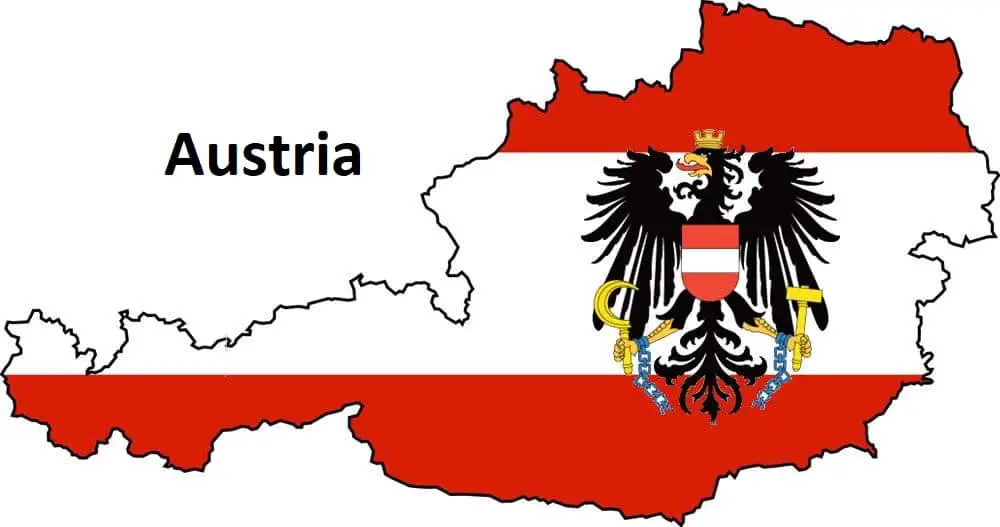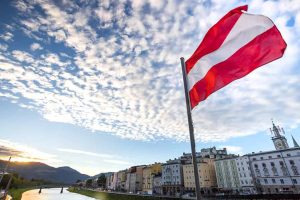Metro
Austria Population, Official Language And More.

Since then, Austria has been a member of various international organizations, such as the United Nations, the European Union, and NATO. The Celtic and Roman origins of Austria, and the role of the province of Noricum in the ancient world. The medieval period of Austria, and the rise of the Babenberg and Habsburg dynasties, as well as the conflicts with the Ottoman Empire. The modern era of Austria, and the transformations of the Austrian Empire, the Austro-Hungarian Empire, the First Republic, the Anschluss, the Second Republic, and the European Union.

Austria
The Population: Austria has a population of about 9 million people, according to the latest estimates by Statistik Austria. The majority of the population lives in urban areas, especially in the capital city of Vienna, which has more than 1.9 million residents. The population is mostly ethnic Austrian, with some minorities of Turks, Germans, Serbs, Croats, and others. The official language is German, but there are also some regional dialects and languages, such as Slovene, Croatian, Hungarian, and Romani.
The Landmark: Austria is famous for its natural beauty and cultural heritage. It has many landmarks that attract tourists from all over the world, such as the Alps, the Danube River, the Schönbrunn Palace, the Hofburg Palace, the Belvedere Palace, the St. Stephen’s Cathedral, the Salzburg Cathedral, the Mirabell Palace, and many others. Some of these landmarks are also part of the UNESCO World Heritage Sites in Austria.
The Official Language: The official language of Austria is German, which is spoken by about 88% of the population. However, there are also some other languages that are recognized as official or co-official in some regions or communities, such as Slovene, Croatian, Hungarian, and Romani. These languages are mostly spoken by ethnic minorities or immigrants who have settled in Austria over time. There are also some dialects of German that are unique to Austria, such as Viennese German, Styrian German, Carinthian German, and Tyrolean German.
The Culture: Austria has a rich and diverse culture that reflects its history and geography. It is known for its contributions to music, art, literature, philosophy, science, and cuisine. Some of the most famous Austrian composers include Mozart, Haydn, Schubert, Strauss, Mahler, and Schoenberg. Some of the most renowned Austrian artists include Klimt, Schiele, Kokoschka, Hundertwasser, and Haas. Some of the most influential Austrian writers include Zweig, Rilke, Kafka, Musil, Schnitzler, and Jelinek. Some of the most prominent Austrian thinkers include Freud, Wittgenstein, Popper, Schlick, and Habermas. Some of the most popular Austrian dishes include Wiener Schnitzel, Apfelstrudel, Sachertorte, Kaiserschmarrn, and Tafelspitz.
The Economic Stability: Austria has a social market economy that combines a high level of social welfare with a competitive market system. It is one of the richest countries in the world in terms of GDP per capita and has a low unemployment rate and inflation rate. It is also a member of the European Union and the Eurozone, which means it uses the euro as its currency and follows the common policies and regulations of the EU. Austria’s main economic sectors include services, industry, agriculture, and tourism. It is also a major exporter of machinery, vehicles, chemicals, metals, food products, and energy.
The GDP: The GDP (Gross Domestic Product) is a measure of the total value of goods and services produced in a country in a given year. According to the World Bank, Austria’s GDP in 2020 was $416.8 billion, which ranked it as the 28th largest economy in the world. The GDP per capita, which is the GDP divided by the population, was $46,445, which ranked it as the 16th highest in the world.
The Currency: The currency of Austria is the euro (€), which is also the common currency of 19 other countries in the European Union. The euro was introduced in Austria in 1999 as an electronic currency, and in 2002 as a physical currency, replacing the previous Austrian schilling. The euro is divided into 100 cents, and there are eight different coins and seven different banknotes in circulation.
The Food: Austria has a diverse and delicious cuisine that reflects its cultural and historical influences. Some of the most popular Austrian dishes include Wiener Schnitzel, which is a thin slice of veal coated in breadcrumbs and fried; Apfelstrudel, which is a pastry filled with apples, raisins, cinnamon, and sugar; Sachertorte, which is a chocolate cake with apricot jam and whipped cream; Kaiserschmarrn, which is a fluffy pancake cut into pieces and served with fruit compote or jam; and Tafelspitz, which is boiled beef with horseradish sauce and potatoes. Austria is also famous for its coffee culture, which dates back to the 17th century when the first coffee house opened in Vienna. There are many types of coffee drinks to choose from, such as Melange, which is coffee with milk and foam; Einspänner, which is black coffee with whipped cream; and Kleiner Brauner, which is espresso with a dash of milk.
Major Cities: Austria has nine federal states, each with its own capital city. The largest and most populous city is Vienna, which is also the national capital and the cultural, political, and economic center of the country. Vienna has about 1.9 million inhabitants and is known for its imperial architecture, musical heritage, museums, and parks. The second largest city is Graz, which is the capital of Styria and has about 290,000 inhabitants. Graz is a UNESCO World Heritage Site for its historic center and a UNESCO City of Design for its modern architecture and creative industries. The third largest city is Linz, which is the capital of Upper Austria and has about 205,000 inhabitants. Linz is a cultural hub that hosts several festivals, such as the Ars Electronica Festival for art, technology, and society; the Brucknerfest for classical music; and the Pflasterspektakel for street art.
Major Airport, Seaport, and Schools: Austria has several airports that connect it to domestic and international destinations. The largest and busiest airport is Vienna International Airport, which serves about 31 million passengers per year and offers flights to over 200 destinations worldwide. Other major airports include Salzburg Airport, Innsbruck Airport, Graz Airport, Klagenfurt Airport, and Linz Airport. Austria does not have any seaports because it is a landlocked country, but it has access to the Danube River, which is an important waterway for trade and tourism. There are several ports along the Danube that handle cargo and passenger traffic, such as Linz, Krems, Vienna, Enns, and Ybbs. Austria has a high-quality education system that offers various levels of schooling, from kindergarten to university. There are about 6,000 schools in Austria, including public schools, private schools, vocational schools, special schools, and adult education centers. There are also about 70 universities and colleges in Austria that offer academic degrees and professional qualifications in various fields of study. Some of the most prestigious universities in Austria include the University of Vienna, the Vienna University of Technology, the University of Graz, the University of Innsbruck, and the University of Salzburg.





